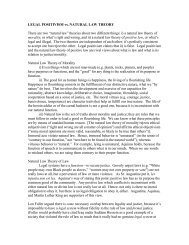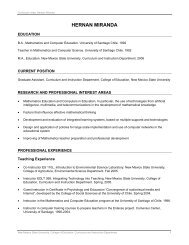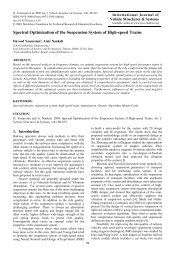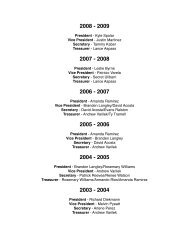Social Comparison and Body Image: Attractiveness Comparisons to ...
Social Comparison and Body Image: Attractiveness Comparisons to ...
Social Comparison and Body Image: Attractiveness Comparisons to ...
You also want an ePaper? Increase the reach of your titles
YUMPU automatically turns print PDFs into web optimized ePapers that Google loves.
658 Jones<br />
were the targets. Among the boys, weight <strong>and</strong> facial comparisons <strong>to</strong> both<br />
peers <strong>and</strong> models/celebrities were related <strong>to</strong> body dissatisfaction. Finally,<br />
the variance accounted for in body dissatisfaction was substantial for the<br />
girls <strong>and</strong> modest for the boys.<br />
Discussion<br />
The results of this study highlight both gender similarities <strong>and</strong> differences<br />
in social comparison <strong>and</strong> its relationship <strong>to</strong> body image. Both adolescent<br />
girls <strong>and</strong> boys use the multiple attractiveness attributes identified<br />
in Study 1 for social comparison when the targets are models/celebrities<br />
<strong>and</strong> peers. The reported social comparisons encompassed the range of attributes<br />
embedded in the conceptions of ideal attractiveness during adolescence<br />
rather than being limited <strong>to</strong> the most consensual or highly endorsed<br />
attributes.<br />
The patterns of comparisons <strong>to</strong> peers or models provide additional evidence<br />
of gender similarities. Peers tended <strong>to</strong> be the more frequent targets<br />
of social comparison for both girls <strong>and</strong> boys, especially for height, weight,<br />
personality, intelligence, <strong>and</strong> popularity. The results support the general expectation<br />
from the social comparison literature that individuals prefer <strong>to</strong><br />
make comparisons <strong>to</strong> similar others (Miller et al., 1988). In addition, certain<br />
attributes such as popularity <strong>and</strong> intelligence may be more relevant <strong>to</strong> both<br />
acceptance <strong>and</strong> performance within the school context (Brown et al., 1994)<br />
making peers more salient targets. Another possible reason for the preference<br />
for peer targets may be the difficulty of obtaining information about<br />
certain attributes from two-dimensional representations in the media. It is<br />
through personal interactions that knowledge about these attributes can be<br />
more readily obtained.<br />
Although peers were more frequently the targets of attractiveness comparisons,<br />
models were certainly identified as targets as well. For example,<br />
there were no differences in the rates at which students reported comparing<br />
themselves <strong>to</strong> models or peers when the attributes were style, shape/build,<br />
<strong>and</strong> face. Furthermore, girls reported comparable levels of social comparison<br />
across targets for weight; for boys, similar rates of social comparison were<br />
noted for build. It is apparent that popular appearance culture represented<br />
by media models <strong>and</strong> celebrities as well as the proximal appearance culture<br />
of same-sex peers at school are both relevant sources for judging the self <strong>and</strong><br />
gathering information especially about physical attractiveness attributes.<br />
<strong>Social</strong> comparisons <strong>to</strong> peers <strong>and</strong> <strong>to</strong> models/celebrities also share a similar<br />
relationship <strong>to</strong> body dissatisfaction. Indeed, comparisons <strong>to</strong> peer targets












